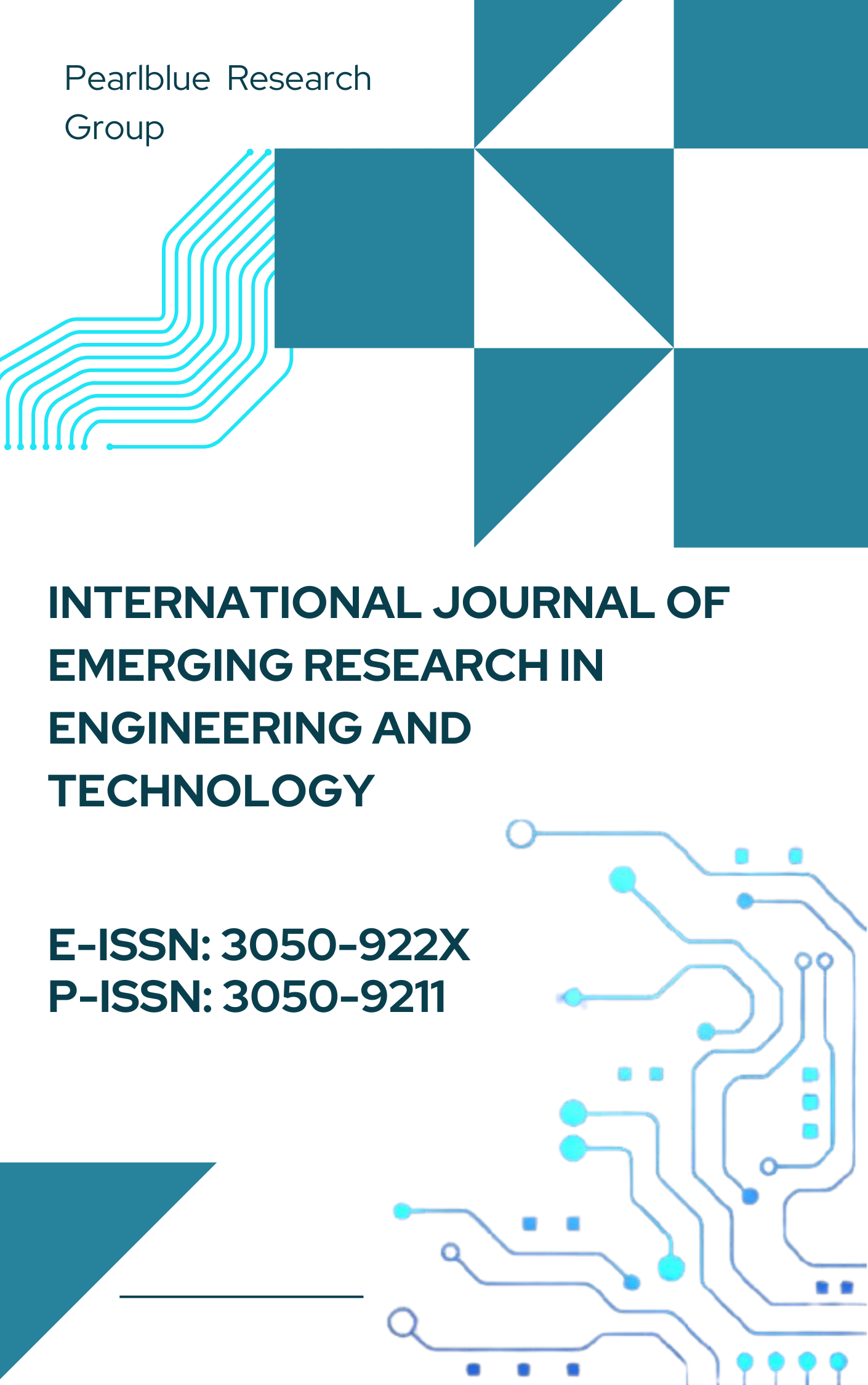From Cyber Frameworks to Autonomous Defense: A U.S.-Centric Model for AI-Integrated Compliance
DOI:
https://doi.org/10.63282/3050-922X.IJERET-V4I1P109Keywords:
U.S. Cybersecurity Frameworks, AI-Integrated Compliance, Autonomous Cyber Defense, NIST Cybersecurity Framework (CSF), AI-Driven Threat Detection, Reinforcement Learning in Cybersecurity, AI Risk Assessment, Data Privacy Regulations, Cybersecurity in Emerging Technologies (e.g., IoT, 5G), AI in Cloud Security, Autonomous Cyber Defense SystemsAbstract
The rapid integration of artificial intelligence (AI) into cybersecurity frameworks is transforming the landscape of compliance and defense mechanisms across public and private sectors. Traditional compliance frameworks, such as the National Institute of Standards and Technology (NIST) Cybersecurity Framework and Cybersecurity Maturity Model Certification (CMMC), often lack the agility and scalability required to address modern cyber threats effectively. This study explores an innovative U.S.-centric AI-integrated compliance model that incorporates advanced AI techniques such as machine learning (ML), natural language processing (NLP), and autonomous response systems. By automating compliance monitoring and enabling proactive cybersecurity measures, the proposed model bridges the gap between static frameworks and dynamic defense systems. Challenges such as algorithmic bias, regulatory hurdles, and technical constraints are also addressed, alongside policy recommendations for fostering AI innovation. The findings underscore the transformative potential of autonomous AI-enabled compliance and defense mechanisms in mitigating risks, enhancing efficiency, and ensuring scalable implementation across diverse sectors
References
[1] NIST, “Framework for Improving Critical Infrastructure Cybersecurity,” National Institute of Standards and Technology, 2018. [Online]. Available: https://www.nist.gov
[2] Cybersecurity Maturity Model Certification Accreditation Body (CMMC-AB), “CMMC Model Version 1.02,” 2020. [Online]. Available: https://www.cmmcab.org
[3] G. Hinton, Y. LeCun, and Y. Bengio, “Deep Learning,” Nature, vol. 521, pp. 436–444, 2015. doi:10.1038/nature14539
[4] N. Papernot et al., “The Limitations of Deep Learning in Adversarial Settings,” in Proceedings of the IEEE European Symposium on Security and Privacy, 2016, pp. 372–387.
[5] M. Veale and L. Edwards, “Clarity, Surprises, and Further Questions in the GDPR’s Approach to Algorithmic Fairness,” Computer Law & Security Review, vol. 34, no. 2, pp. 398–404, 2018. doi:10.1016/j.clsr.2018.02.002
[6] E. Brynjolfsson and A. McAfee, The Second Machine Age: Work, Progress, and Prosperity in a Time of Brilliant Technologies, New York: W.W. Norton & Company, 2014.
[7] L. Cavoukian, “Privacy by Design: The 7 Foundational Principles,” Office of the Information and Privacy Commissioner of Ontario, Canada, 2009. [Online]. Available: https://www.ipc.on.ca
[8] S. Viljoen, A. Narayanan, and J. Wexler, “A Critical Reflection on Automated Decision-Making Systems and their Regulation,” Journal of Cyber Policy, vol. 4, no. 3, pp. 365–381, 2019. doi:10.1080/23738871.2019.1697684
[9] D. S. Wall, “Cybercrime and the Culture of Fear: Social Science Fiction(s) and the Production of Knowledge about Cybercrime,” Information, Communication & Society, vol. 11, no. 6, pp. 861–884, 2008. doi:10.1080/13691180802459977
[10] R. Housley and T. Polk, Planning for PKI: Best Practices Guide for Deploying Public Key Infrastructure, Hoboken, NJ: Wiley, 2001.
[11] A. Ross and D. T. Campbell, Human Resource Issues in Information Technology Security: An Audit and Control Approach, Hoboken, NJ: Wiley, 2006.
[12] C. Perrow, Normal Accidents: Living with High-Risk Technologies, Princeton, NJ: Princeton University Press, 1999.
[13] P. Goodfellow, Y. Bengio, and A. Courville, Deep Learning, Cambridge, MA: MIT Press, 2016.
[14] B. Schneier, Data and Goliath: The Hidden Battles to Collect Your Data and Control Your World, New York: W.W. Norton & Company, 2015.
[15] R. Clarke and S. P. Edwards, “Information Security Governance: Managing Security in the Age of AI,” Journal of Strategic Information Systems, vol. 18, no. 4, pp. 233–245, 2010. doi:10.1016/j.jsis.2010.09.003
[16] U.S. Congress, “Federal Information Security Management Act of 2002,” 2002. [Online]. Available: https://www.congress.gov
[17] U.S. Department of Health & Human Services, “Health Insurance Portability and Accountability Act (HIPAA),” 1996. [Online]. Available: https://www.hhs.gov
[18] D. Silver et al., “Mastering the Game of Go Without Human Knowledge,” Nature, vol. 550, pp. 354–359, 2017. doi:10.1038/nature24270
[19] M. Barreno et al., “The Security of Machine Learning,” Machine Learning, vol. 81, no. 2, pp. 121–148, 2010. doi:10.1007/s10994-010-5188-5
[20] A. Chouldechova and A. Roth, “The Frontiers of Fairness in Machine Learning,” Communications of the ACM, vol. 64, no. 7, pp. 82–89, 2018. doi:10.1145/3433949
[21] I. Goodfellow et al., “Explaining and Harnessing Adversarial Examples,” in Proceedings of the International Conference on Learning Representations (ICLR), 2015.
[22] OECD, “Recommendation of the Council on Artificial Intelligence,” Organisation for Economic Co-operation and Development, 2019. [Online]. Available: https://www.oecd.org
[23] H. J. Highland, Data Security Handbook, New York: Garland STPM Press, 1981.
[24] M. J. Coles and D. S. Simpson, Cybersecurity Skills Gap: Challenges and Opportunities, Hoboken, NJ: Wiley, 2015.
[25] J. Devlin et al., “BERT: Pre-training of Deep Bidirectional Transformers for Language Understanding,” in Proceedings of NAACL-HLT, 2019, pp. 4171–4186.
[26] J. Kaur and B. Singh, “Cloud-Based Cybersecurity Solutions: A Scalable Approach,” Journal of Cloud Computing, vol. 6, no. 2, pp. 112–127, 2018. doi:10.1186/s13677-018-0125-2
[27] M. Armbrust et al., “A View of Cloud Computing,” Communications of the ACM, vol. 53, no. 4, pp. 50–58, 2010. doi:10.1145/1721654.1721672
[28] C. Dwork, “Differential Privacy,” in Proceedings of the International Colloquium on Automata, Languages, and Programming, 2006, pp. 1–12.
[29] NERC, “Critical Infrastructure Protection Standards,” North American Electric Reliability Corporation, [Online]. Available: https://www.nerc.com
[30] E. R. Johnson et al., “Defending Electronic Health Records Against Ransomware: Lessons Learned,” Health Informatics Journal, vol. 27, no. 1, pp. 41–55, 2020. doi:10.1177/1460458219871237
[31] M. Anastasopoulos and S. Whitaker, “Leveraging AI for Anti-Money Laundering in Financial Institutions,” Journal of Financial Crime, vol. 27, no. 2, pp. 543–557, 2021. doi:10.1108/JFC-06-2019-0078
[32] B. A. Weiss, “Ensuring Security in Supply Chains Through Firmware Update Verification,” Journal of Manufacturing Systems, vol. 55, pp. 295–306, 2018. doi:10.1016/j.jmsy.2018.06.001
[33] R. Halderman and J. A. Varner, “Securing Elections with AI: Opportunities and Challenges,” Journal of Democracy and Technology, vol. 12, no. 3, pp. 178–193, 2020.
[34] V. Shor, “Algorithms for Quantum Computation: Discrete Logarithms and Factoring,” in Proceedings of the IEEE Symposium on Foundations of Computer Science, 1994, pp. 124–134.
[35] Aragani, V. M. (2022). “Unveiling the magic of AI and data analytics: Revolutionizing risk assessment and underwriting in the insurance industry”. International Journal of Advances in Engineering Research (IJAER), 24(VI), 1–13. - 1



